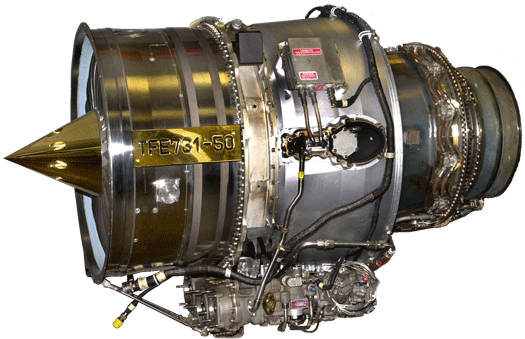
Written by Jon Dodson, Duncan Aviation Turbine Engine Service Sales Manager
Over the years I’ve logged countless hours with my hands inside a Honeywell TFE731 turbine engine as an aircraft turbine engine technician. For the last 19 years my perspective has been from the sales desk assisting owners, operators, DOMs, pilots to better understand their engines and how to keep them in the best operating condition for many years of service. Amid the many customer requests, I’ve noticed a recent trend. Occasionally, I’ll get a customer who requests a test cell run be performed on their engines after completion of a Major Periodic Inspection (MPI) and prior to reinstallation. This request tells me there is a misconception about the TFE731 engine. I’m going to take this opportunity to clear it up. The Honeywell manual has never required a test cell run after the completion of an MPI. Where all of a sudden are customers getting the idea they need a test cell run to gauge whether or not the engine is rebuilt correctly? What is the issue or is there an issue at all?
False Sense of Security
For years, no service center would consider absorbing the time and expense necessary to run the engines through a test cell after an MPI, even if they had the equipment. So Why now? Because they can, it’s about marketing.
They are attempting to differentiate themselves by selling the only thing they have over the competition—the test cell. If they can create a perceived value where there isn’t one, it may be just enough to convince an unsuspecting customer he’s getting something for nothing. This works, because when you create fear, you create a need, and if you happen to have a solution to that “need,” then your marketing efforts have worked. It’s a marketing tool.
An experienced TFE731 engine technician will tell you, creating the need for a test cell run after an MPI is creating a false sense of security. And if you’re being sold on the idea that your test cell run is “free,” rest assured, it is not. The time and expense is being paid for by someone, most likely the unsuspecting customer. Let’s talk about the true need for test cells.
Time & Place
Test cell runs can be beneficial. There are two types of test cell runs, certified and non-certified. Certified runs are a maintenance manual requirement whenever the compressor section of the engine has been dismantled. Non-certified runs are 5-point runs performed in the cell. The Honeywell maintenance manual is very clear when a test cell run is required. In the case of the TFE731 engine, the only time a test cell run is required is when the HP impeller is removed from the HP shaft. An engine can be dismantled to any level up to this point and then be reassembled and returned to service without a test cell run. An MPI is far less invasive because the compressor impeller, core bearings and carbon seal package have not been disturbed.
The test cell run that customers are being sold in addition to their MPI, is the non-certified type. During a non-certified test cell after an MPI, engines are subjected to harsh conditions in an artificial environment for up to an additional three hours of run time. The results mean little because the engine performance margins will vary greatly when installed. The ITT and speed margins will have changed. Because of the time and effort it takes to prepare the engine, run the test and then de-stage the engine and make it ready for installation with its own equipment, with variable results , the non-certified test run performed after an MPI is a glorified leak check and a huge waste of time, energy and money.
This run provides NO additional value-added benefits to a MPI than the required post-MPI on-wing ground runs. During the post-MPI on-wing ground run, your engines are installed on the aircraft and retain its original inlet nacelle, tailpipe, afterbody, accessories and pylon installation. This is the real world operating environment for the engine where numbers really mean something.
In greater than 98% of the engines that come through our turbine engine shop for MPI, an on-wing ground run provides more than sufficient evidence the engine is operating with satisfactory performance and may be returned to service. If the engine needs an N2 speed change, this can be accomplished on-wing in far less time than it takes to de-stage the engine from the cell, access the engine, make the adjustment, re-stage the engine, run it, remove it from the cell and then begin the installation of all the airframe equipment to reinstall the engine on the aircraft.
TFE731 Performance
We must give credit to Honeywell Engineering for developing the TFE731 and building into it the performance repeatability we see today. The original engine design has come along way. Vast improvements made in diagnostic electronics to perform 5-point runs, vibration surveys, fan balances and everything else the engine needs for return to service are readily available with incredible accuracy. Just about all the hardware in the hot section of these engines has been improved, reinforced, engineered for robustness and performance.
The engine has indeed gotten better over time. Repeatability of performance is no longer an issue for all models of the TFE731 engine and hasn’t been for quite some time.
For engines undergoing a Major Periodic Inspection, the test cell run is about as necessary as a GPS to find your way to work everyday. If you know where you're going, what use is it?
We build engines. We have been for more than 30 years.
We'll stack our post-MPI re-entry rate up to any shop out there.


